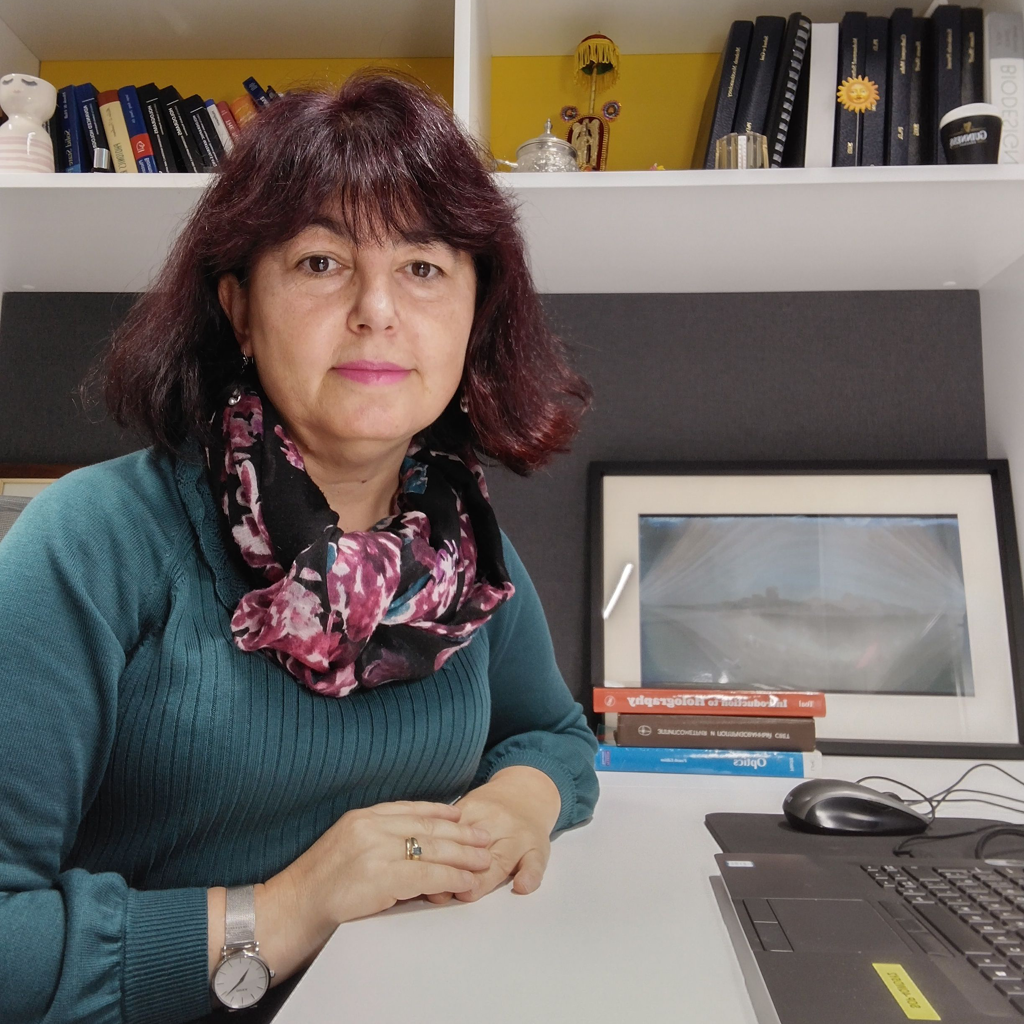Izabela Naydenova
Technological University Dublin, IrelandFor contributions to holographic materials, sensors, and modeling, and outstanding service to the community.

Izabela Naydenova focuses on holographic sensors, a field with a range of applications. Currently, she is working on two primary projects with exciting opportunities and real-world implications. First, a project funded by the European Space Agency explores using holograms to monitor the healing of wounds without removing bandages or protective coverings. As part of a larger team of collaborators, Izabela’s group is working on the temperature sensor for the new technology, which would monitor the wound for any slight increase in temperature indicating inflammation. Second, her team is exploring using holographic sensors to detect volatile organic components indoors, like dangerous compounds in paint or carpet or hazardous gases in a more industrial environment. Their role within a large group of collaborators brought together by Katholieke Universiteit Leuven is working on the optical device used in the detector.
The future of holography is promising for Izabela. She shares that when many people think of holography, they think of the “holograms” in Star Wars, and with recent developments of better and faster materials, holographic television similar to what’s shown in the Star Wars universe is not out of reach. However, what excites Izabela most is holography’s potential applications in point-of-care devices and all the possibilities to help people. Holographic sensors have a distinct advantage because they can be made smaller and cheaper than existing options, which could benefit a much wider group.
Izabela got her start with an early interest in science and math. Her father was a veterinarian and hoped his daughters would pursue medicine or science, encouraging Izabela and her sister to explore those areas. While neither daughter would become a medical doctor, both sisters work in fields with interesting medical care applications. Born and raised in Bulgaria, Izabela had the opportunity to compete in science competitions called Olympiads. One year, the three subjects she was interested in competing for - math, biology, and physics - were scheduled on the same day. Ultimately, she felt inspired by her passionate physics teacher and chose to compete there. Izabela won the competition and was accepted into a specialized high school for physics, initiating her path toward holography.
A particularly informative experience for Izabela was completing a postdoc outside of holography, which was the focus of her PhD thesis. She was accepted as a postdoc into Professor Dr. Michel-Beyerle’s group at Technical University Munich, Germany, which worked in advanced time-resolved spectroscopy and its application to charge transfer in DNA. Through this multidisciplinary work, she learned about different optical techniques and how to function in an interdisciplinary team. In turn, she encourages all young scientists to explore a related field to see what can be brought back and applied to their primary focus. She shares that she incorporated the many tools she learned in her PhD into her postdoc and was rewarded with a broader viewpoint and new interests.
While in Munich, she met another Bulgarian scientist, Svetlana Mintova. Izabela shares that she learned many things from Svetlana, like networking, how to approach interdisciplinary science, and how to initiate collaborations. She also observed how Svetlana treated her colleagues and students and how she worked to infuse them with the confidence to be independent researchers. Izabela incorporates what she’s learned in her own mentorship.
For more than twenty years Izabela’s research has been based at the Centre for Industrial and Engineering Optics. Over her years of supervising students, she has realized that she is working with the next generation of scientists today. Rather than applying the same approaches and teaching techniques to this diverse group, she strives to adapt to their changing needs to ensure they have the best training possible. She says, “The way I see it, these are my future colleagues and collaborators.”
Photo Credit: Izabela Naydenova
Profile written by Samantha Hornback
